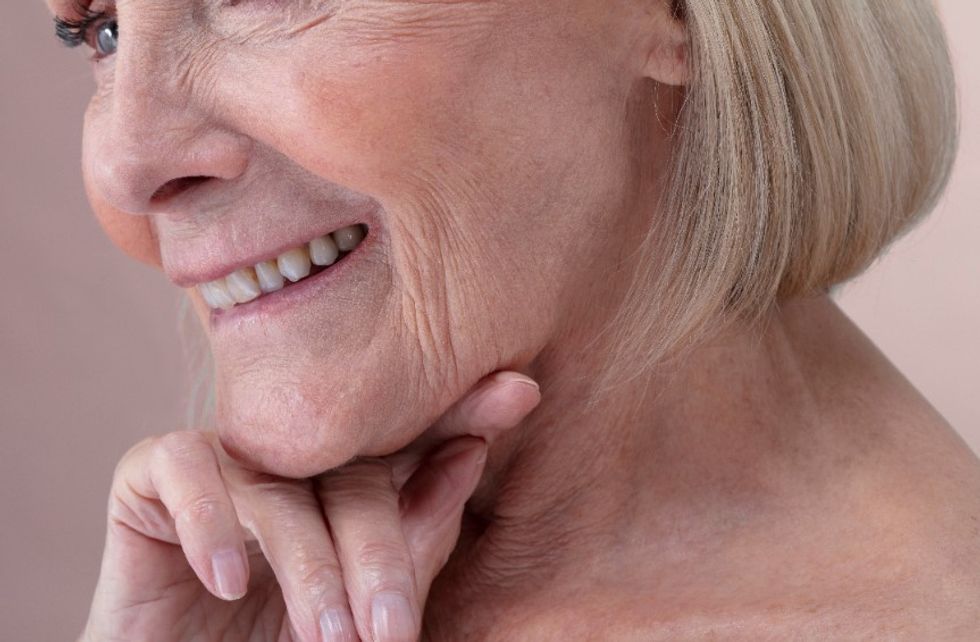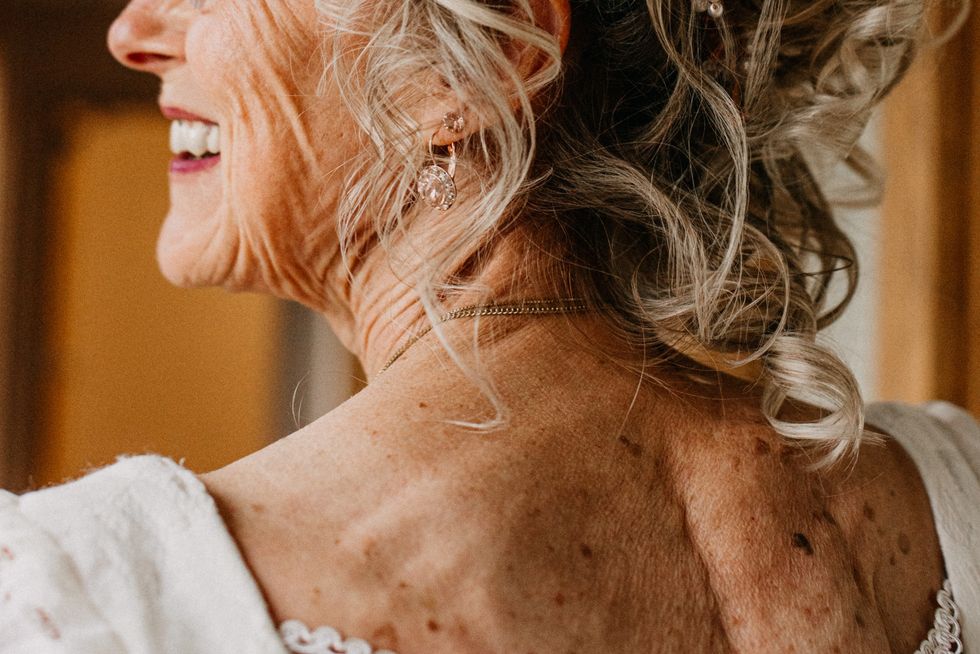Jowls: What they are, why you have them, and how to get rid – 'Tone the jawline!'

A dermatologist shared her favourite at-home remedies exclusively with GB News
Don't Miss
Most Read
Skin ageing is inevitable: there's simply no way around it. Over time, the body produces less collagen, elastin, sebum, and hyaluronic acid, leading to a number of changes.
With age, you'll likely notice more and more fine lines and wrinkles, dryness, and sagging. Slower cell turnover may also lead to dullness, where once there was a vibrant glow.
While these signs of ageing are nothing to be ashamed of, many women are keen to maintain a youthful appearance for as long as possible.
Here, experts revealed how they can address one common concern: jowls.
TRENDING
Stories
Videos
Your Say
Jowls, as defined by sk:n Clinics, are areas of "sagging, loose skin below the jawline". They may also experience turkey neck, which is "crepey, wrinkled skin" in this area.
These typically develop with age, although several factors can influence when a person gets them and to what degree.
The experts explained: "Both sun damage and smoking can accelerate the ageing process, resulting in a loss of the skin's elasticity and collagen.
"Genetics can also play a part in the development of jowls; those with a genetic predisposition will be more likely to develop them.
LATEST DEVELOPMENTS:

Jowls are areas of 'sagging, loose skin below the jawline'
| GETTY IMAGES"It has also been suggested that sleeping on your front or side consistently may cause jowls to form over time."
To improve the appearance of your skin – including jowls – there are various practical things you can do.
Board-certified dermatologist Dr Dendy Engelman advises a multifaceted, holistic approach. She told GB News: "Consistent use of moisturisers and products with ingredients like peptides, hyaluronic acid, and antioxidants can support hydration and elasticity.
"Facial massage or gua sha can also encourage lymphatic drainage and tone the jawline over time."

Turkey neck is defined as 'crepey, wrinkled' skin around the neck area
| GETTY IMAGESConfirming that sunscreen is the best thing you can put on your skin, the expert added: "Daily SPF is one of the most powerful tools for preventing premature sagging, as UV exposure breaks down collagen and elastin."
She also recommended enjoying a nutritious diet, prioritising antioxidant-rich foods and healthy fats (like omega-3s).
While eating well can give your skin a major boost, unhealthy eating can have the opposite effect.
Indeed, sugary treats may be tasty, but over time, they wreak total havoc on the complexion due to the eventual formation of AGEs.
A study, published in the National Library of Medicine, revealed: "AGEs not only reduce skin elasticity, accumulate pigments, and produce appearance changes such as wrinkles, but also destroy the skin barrier, cause the apoptosis of skin-related cells, and induce inflammation."
The dermatologist also stressed the importance of staying hydrated. Drinking plenty of water "supports skin integrity from within" – bonus points if you add two anti-ageing ingredients.
Maintaining an active lifestyle, getting enough sleep, managing stress, and avoiding cigarettes are also important if you want to "maintain skin firmness", Dr Engleman advised.
These at-home methods can go a long way, but of course, major transformations sometimes require professional input.
"For those looking to go a step further, there are non-surgical treatments such as Prisma or EVERESSE that stimulate the body's own collagen production, helping to firm and lift the skin over time without invasive procedures," the dermatologist said.
"These can be a great complement to an at-home regimen for more visible results while still maintaining a natural look and feel."
If you decide to go down this route, make sure you extensively research your preferred treatment and the professional administering it.










